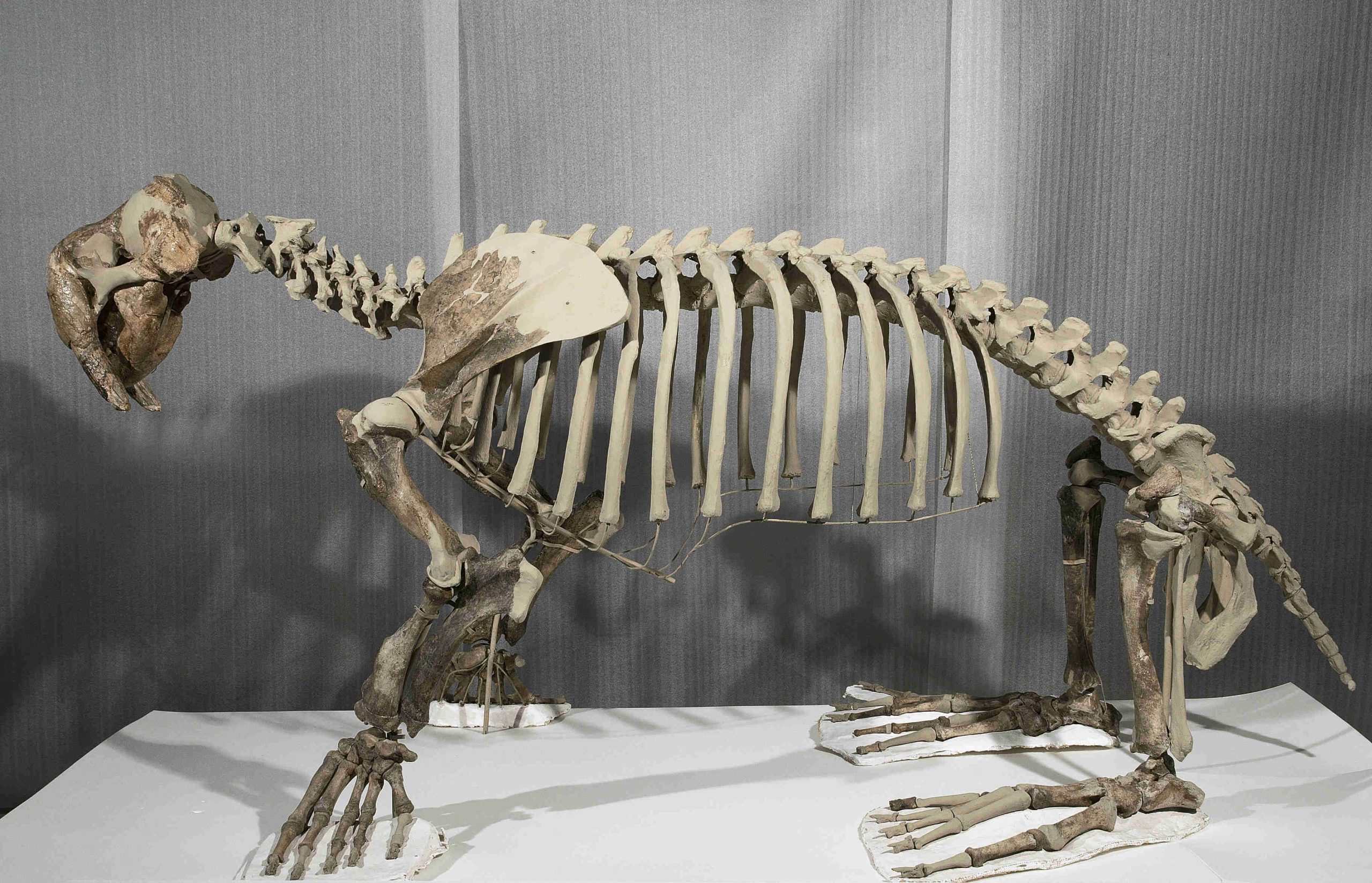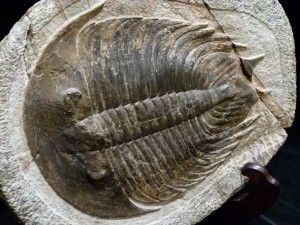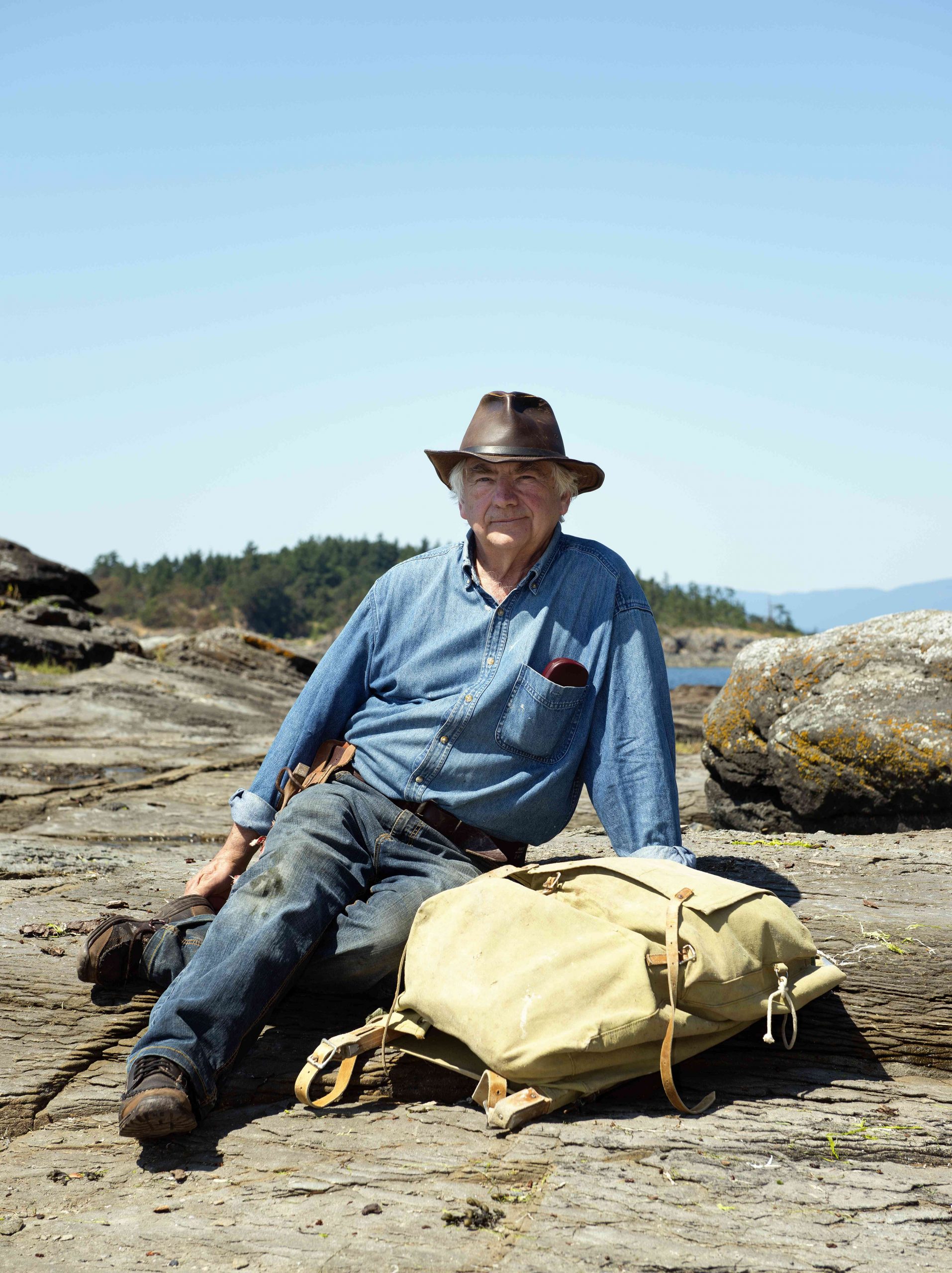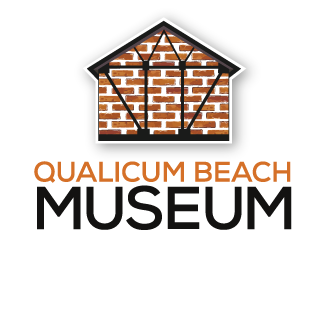Natural History
Paleontology
Fossils are precious gifts from the geologic past: signs and remains of ancient living things preserved in the Earth’s crust. The word has a Latin origin, from fossilis meaning “dug up”, and that remains the key attribute of what we label as fossils. Most people, when they think of fossils, picture skeletons of animals or leaves and wood from plants, all turned to stone. But geologists have a more complicated view, and you can dig into the subject here at the Qualicum Beach Museum. A primary draw to the Museum centres around our Paleontology Exhibit, a collection which was assembled and is curated by the internationally known fossil collector and researcher, Graham Beard, in conjunction with the Vancouver Island Paleontology Museum Society. Vancouver Island is recognized as one of the best fossil collection areas in the world and Beard’s many years spent exploring these rich fossil beds has resulted in a vast collection of more than 20,000 pieces. The present exhibit displays many important specimens from this valuable collection.
The Museum’s Palaeontology Exhibit is recognized as one of the world-class statures by palaeontologists from all over the world. British Columbia is home to some of the richest fossil beds in the world, some of which are located on Vancouver Island and the Northern Gulf Islands – especially Hornby Island, which lies along the geologically active “ring of fire” encompassing the Pacific Ocean. The Museum’s collection was assembled and is curated by the internationally known fossil collector, Graham Beard, who has spent more than 45 years exploring the Island’s rich fossil beds, accumulating a vast collection of more than 20,000 pieces. The stature of Graham Beard’s collection has prompted other collectors to make contributions to the museum’s palaeontology exhibit, resulting in a valuable assortment of quality specimens from different parts of the globe.
Vancouver Island’s rich fossil beds and the reputation of Graham Beard also attract international researchers, scientists and students in the field to study and learn from our outstanding collection. The museum’s palaeontology exhibit spans the range of geologic time, from the Precambrian Era – 545 million years ago to the Pleistocene Era of 13,000 years ago. The incredible variety of fossils on display represent a range of fossil organisms from the Cretaceous, Jurassic, and Triassic Periods including plants, insects, ginkgo and fish, some dinosaurs and early reptiles, as well as bones and skulls from the early mammals of the Eocene Epoch (about 45 million years ago). Many of the fossils cannot be seen anywhere else, including the Cretaceous flower fossils from the Nanaimo area and the first trilobites discovered on Vancouver Island.
The only trilobite fossils ever found on Vancouver Island
Trilobites are arthropods or “Animals in Armor,” which refers to their decay-resistant calcite exoskeletons, which are shed every so often and commonly found fossilized. Arthropods include insects, spiders, crabs, scorpions, lobsters, millipedes and barnacles.
Fossils from the Cranberry Arms Site
One of the most important plant fossil locations ever found on Vancouver Island. In August 1996, during the construction of the road to the ferry terminal at Duke Point, a wealth of plant fossils of the Protection Formation Age (Upper Cretaceous) was discovered in Cedar, near the Cranberry Arms pub. Thanks to a keen eye and hours of careful collecting by Mr J. Whittles, a number of fossil flowers were found here. Flowers very rarely form fossils and so those found by Mr Whittles should add greatly to our understanding of angiosperm (flowering plants) evolution.

“Rosie” the Walrus
(Odobenus Rosmarus). The skull on display is from a 60,000-year-old Pleistocene walrus skeleton, discovered in 1979 by Mr Bill Waterhouse while he was collecting shellfish, 10 km northwest of Qualicum Beach. Noticing tusks protruding out the sand, Mr Waterhouse tugged on them removing part of the skull. His daughter took the skull to her biology teacher, Mr Graham Beard, who over the next few weeks returned to excavate the rest of the specimen. “Rosie” is now at the Canadian Museum of Nature in Ottawa where the Pleistocene walrus has been used in an Ice Age display. The Canadian Museum of Nature has given back to our museum a resin cast of Rosie’s head, and it is used as an excellent teaching tool as it visually differentiates the bones of the skull that was recovered in the excavation and those that were never found.

Virtual Exhibit
Explore our Virtual Museum of Canada Exhibit ‘Paleontology on Vancouver Island’.
What You’ll Find
- One of the first reptiles (Captorhinomorph) from the Carboniferous
- A large Permian amphibian from Germany
- A large collection of Oligocene vertebrate and invertebrate fossils from Washington State
- Ice Age fossils of Pliestocene Bison and Mammoth found in the Yukon
- Numerous Paleozoic fossils from Eastern Canada
- A complete skeleton of a Psittacosaurus from Mongolia
- A collection of dinosaur bones from Alberta
- Jurassic fossils from Solnhofen, Germany
- Eocene plant, vertebrate and invertebrate fossils from
- Cache Creek and Vancouver Island
- A large fossil collection of recent vertebrates from Vancouver Island
- Nautiloids – species living today (octopus, squid, cuttlefish and nautilus) as well as extinct, from the Paleozoic and Mesozoic, such as Ammonites, many excellent Mesozoic ammonite fossils, and Dinornis ingens (Moa) bone from New Zealand
Graham Beard
Paleontology Curator
A primary draw to the Museum centres around our Palaeontology Exhibit, a collection which was assembled and is curated by the internationally known fossil collector and researcher, Graham Beard, in conjunction with the Vancouver Island Paleontological Museum Society.
Graham Beard himself is a recognized international expert in palaeontology and is a long-standing member of the Qualicum Beach community. Even as a young teenager, Graham was drawn to the wonders of natural history, collecting fossils and reptiles to display in his own private museum set up in the basement of his family home. A trip to Drumheller with his father was a highlight for the blossoming palaeontologist who went on to become a biology teacher. Having discovered many new species of animals and plants, and even a new genus of walnut, the Geology Department of Vancouver Island University has made him an honorary research associate. His 40 years of fieldwork have earned him a reputation as an authority and he continues to lecture on his years of research and ancient discoveries, attracting scientists and students in the field to study and learn from his vast collection, and to explore the area themselves. Graham also continues to donate considerable time to activities in the community that ensure his wealth of knowledge and enthusiasm for palaeontology is shared with museum visitors and recipients of our outreach. His dedication to the quality of the Palaeontology Exhibit sets our museum apart from other community museums.
Graham has co-authored a book titled West Coast Fossils: A Guide to the Ancient Life of Vancouver Island, containing photographs of more than 200 fossils, many from his collections here at the QB Museum.


